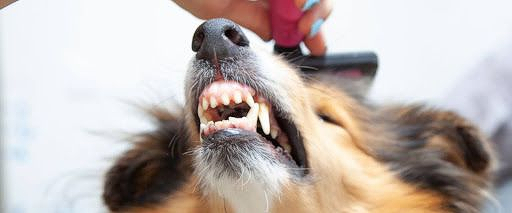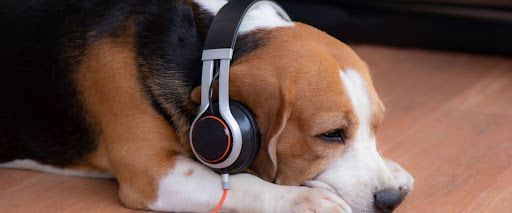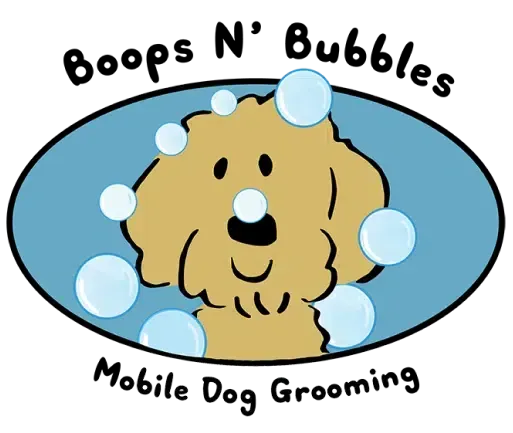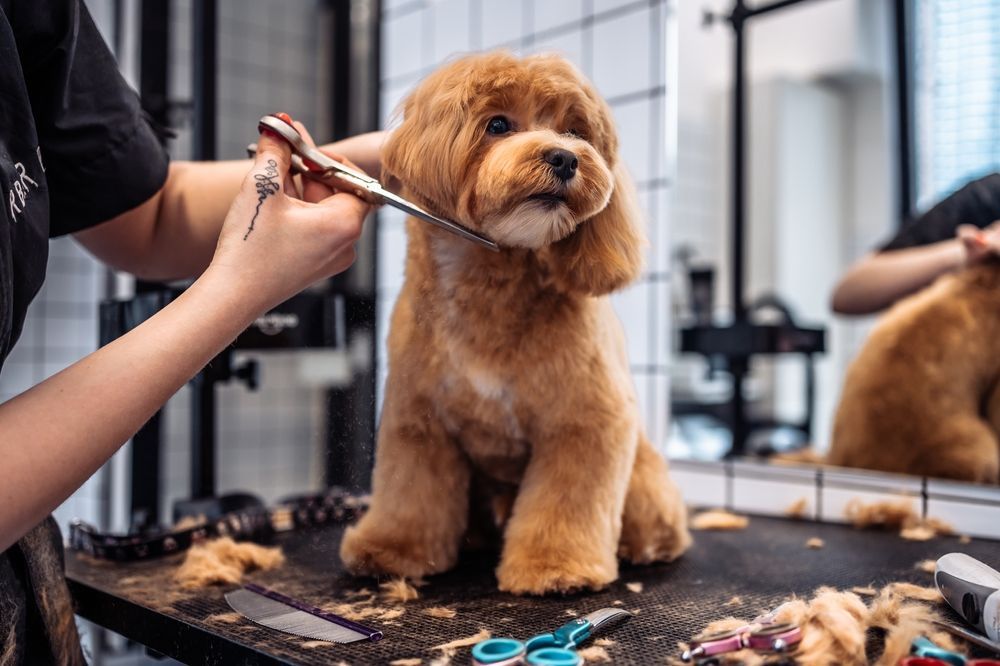How to Calm a Dog for Grooming: Pro Groomer Tips
Your dog may love walks, belly rubs, and playtime, but when the grooming tools come out, their mood changes. Some dogs shake, hide, or even resist when it’s time for a bath or haircut. Grooming is essential for your dog’s health, but for many pets, it’s stressful.
Whether you groom at home or use Mobile Dog Grooming services, understanding how to calm a dog for grooming is the key to a safe, smooth, and pleasant experience. In this guide, we’ll explore why dogs get nervous, practical techniques for calming them, and pro groomer tips to make grooming anxiety a thing of the past.
Why Dogs Get Nervous During Grooming

Before you can calm your dog, it’s important to understand why grooming triggers anxiety. Common causes include:
- Unfamiliar sensations: Clippers, scissors, or even running water can feel strange.
- Negative past experiences: A bad grooming session in the past can create lasting fear.
- Separation from owners: Dogs may feel uneasy when left at a grooming salon.
- Handling sensitivity: Some dogs dislike being touched on their paws, ears, or tail.
When you recognize the root cause of your dog’s discomfort, you can address it directly and create a more stress free dog grooming experience.
Step-by-Step Guide: How to Calm a Dog for Grooming
1. Create a Calm Environment Before Grooming

Start by setting the scene. Choose a quiet space away from loud noises and distractions. Soft lighting and gentle background music can help create a relaxing atmosphere. Avoid rushing, dogs can pick up on your stress, and it may make them more anxious.
You can also introduce a calming scent, like lavender, through a pet-safe spray or diffuser. While scent alone won’t solve anxiety, it can contribute to a sense of security.
2. Gradually Introduce Grooming Tools
Many dogs fear grooming tools because they associate them with unpleasant sensations. To reduce dog grooming anxiety, let your dog explore the tools before you begin. Allow them to sniff the brush, hear the sound of clippers (without touching them yet), and reward them for staying calm.
You can break this process into short sessions over several days. The goal is to build familiarity so the tools no longer feel threatening.
3. Use Positive Reinforcement
Reward-based training works wonders for calming nervous dogs. Keep treats nearby and praise your dog for small steps, even standing still while you brush them deserves a reward. Over time, they’ll learn that grooming leads to positive outcomes.
Use high-value treats like small bits of chicken or cheese. Save these special rewards exclusively for grooming time to strengthen the association.
4. Handle Sensitive Areas Gently
Some dogs dislike having their paws, ears, or tails handled. Instead of forcing them, take your time. Gently touch these areas during play or cuddle time to help your dog get used to it.
When grooming these sensitive spots, work in short bursts. For example, clip one nail, reward your dog, then take a short break before continuing. This helps avoid overwhelming them.
5. Schedule Short Grooming Sessions
If your dog becomes restless after a few minutes, it’s better to stop and resume later than to push through and create a bad experience. Pro groomers often recommend breaking grooming into multiple short sessions, especially for puppies or anxious dogs.
By keeping sessions brief and positive, your dog learns that grooming isn’t something to dread.
6. Exercise Before Grooming
A tired dog is usually a calmer dog. Taking your dog for a brisk walk or play session before grooming can burn off excess energy and make them more relaxed. Just make sure they have time to cool down before starting, especially if you’re bathing them.
7. Seek Professional Help When Needed
If your dog’s anxiety is severe, a professional groomer experienced in calming dogs for grooming can help. Some groomers specialize in working with anxious pets and use gentle, fear-free handling techniques.
In extreme cases, your vet may recommend calming aids, such as supplements or pheromone sprays, to help make grooming more comfortable.
Pro Groomer Tips for Stress Free Dog Grooming
Professional groomers have worked with dogs of every size, breed, and temperament. They can also suggest
how often you should groom your dog. Here are some of their proven strategies:
- Keep your own energy calm and controlled, dogs mirror your emotions.
- Start with the least sensitive areas before moving to more sensitive spots.
- Use quiet grooming tools to minimize noise-related stress.
- End each session on a positive note, even if you couldn’t finish all tasks.
Calming Nervous Dogs at Home vs. the Salon
At home, your dog benefits from familiar surroundings, which can reduce anxiety. However, not every owner has the skills or equipment for a full grooming session. Expert groomers provide
best grooming services and combine professional expertise with the comfort of a home environment, offering the best of both worlds.
In a salon, the environment may be more stimulating, but experienced groomers know how to handle nervous dogs and work efficiently to minimize stress.
Long-Term Strategies to Reduce Dog Grooming Anxiety
Helping your dog feel calm during grooming isn’t just about one session, it’s about building confidence over time.
- Desensitization: Gradually expose your dog to grooming-related sights, sounds, and sensations.
- Routine: Keep grooming consistent in timing and place so your dog knows what to expect.
- Socialization: Introduce your dog to different people and situations to reduce overall anxiety.
Conclusion
Mastering how to calm a dog for grooming takes patience, consistency, and the right approach. By creating a calm environment, introducing tools gradually, rewarding good behavior, and using professional help when necessary, you can turn stressful grooming into a positive experience.
Grooming should be a time of care and connection, not stress. Start slow, stay consistent,
book a grooming session, and help your dog feel safe every step of the way.
FAQs About Calming Dogs for Grooming
How can I sedate my dog for grooming at home?
You should never attempt sedation without veterinary guidance. Vets can prescribe safe sedatives if necessary, but most grooming anxiety can be managed with training, positive reinforcement, and gentle handling.
How do you groom an unwilling dog?
Start slowly and keep sessions short. Use treats and praise to reward cooperation. Break grooming into manageable steps, and avoid forcing your dog, as this increases fear.
What to give my dog to calm down for grooming?
Vet-approved calming supplements, pheromone sprays, or anxiety wraps can help. Avoid over-the-counter human medications, as many are unsafe for dogs.
How do you calm a dog who hates being groomed?
Work on building trust by associating grooming with positive experiences. Introduce tools gradually, groom after exercise, and use gentle, patient handling techniques.
What can I give my dog to calm him down naturally?
Natural options include chamomile tea (in small, dog-safe amounts), CBD for pets, or herbal calming chews. Always check with your vet before trying any natural remedy.


